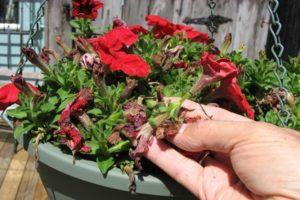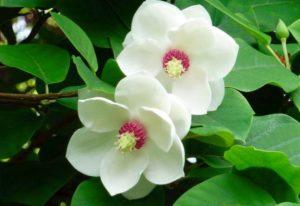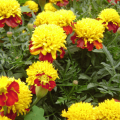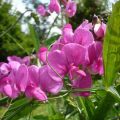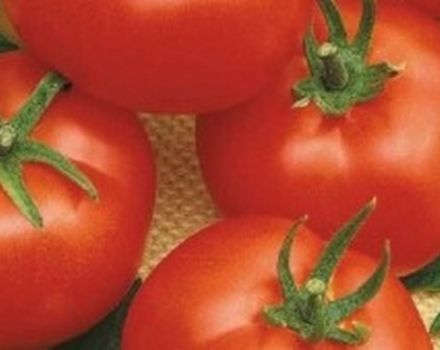Description of species and varieties of perennial arabis, planting and care in the open field
Knowing the basic rules for planting and caring for perennial Arabis, you can transform any garden plot. There are many subspecies of this flower, differing in shades, structure and habitats. Arabis is a very beautiful and unique plant, most often found on mountain slopes, but it can be successfully used on garden plots as well.
Description and features
Arabis belongs to the perennial plants of the Cruciferous family. It is characterized by whole leaves of emerald or variegated color and light down. There are oval, heart-shaped and arrow-shaped variants. The color of the flowers is white, lilac, purple and pink. The dense and dense inflorescences of arabis are racemose. Belongs to the type of ground cover plants that give the impression of a luxurious grass carpet in the garden. It grows rather quickly, and its fresh shoots take root easily. The average plant height is 30 centimeters.
The flowering period of arabis falls at the end of April or beginning of May and lasts 16-30 days. The second stage of flowering in September is also possible, but for this it is necessary to shorten the stems of the plant by 3-4 centimeters in June.
This plant is common in Europe, Asia and North America. In the wild, it is often found on rocks and mountain slopes. Arabis is unpretentious, and even in harsh conditions is able to remain attractive.
Growing seedlings
One of the simplest and most reliable methods of growing perennial Arabis is to prepare seedlings from quality seeds, which are readily available at garden centers or specialist shops.

Timing
Seeds for seedlings should be sown in April using special containers or boxes filled with a substrate with a balanced composition.
Soil preparation
The growth and development of Arabis seedlings depends on properly prepared soil.The optimal composition is a mixture of three parts of garden soil and one part of river sand (it can be replaced with small pebbles).

How to plant
The seeds must be placed in the prepared substrate to a depth of 0.5 centimeters. The air temperature in the room where the containers with seedlings will be located should not exceed +20 ° С.To speed up the emergence of seedlings, cover the containers with agrospan or another type of nonwoven fabric.
Watering
Water the seedlings only when the soil requires moisture. Frequent irrigation is not required, but the condition of the soil should be monitored regularly.
Loosening
The topsoil with seedlings should have a loose and light structure, so it needs daily loosening with a small rake or a regular fork.

Picking
When the first leaf plates appear in the seedlings, a pick is required. To do this, you need to distribute them in separate cups or transplant them at a distance of at least 30 centimeters from each other.
This procedure is only necessary if you plan to grow a flower separately. In the case of growing arabis as a ground cover plant, picking is not carried out.
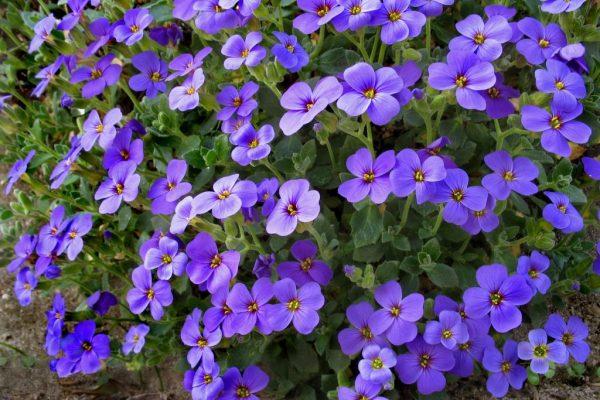
Hardening
Hardening of the plant should begin 10-12 days before planting in an open area. In order for Arabis to adapt well to new conditions, it must be taken outside daily, gradually increasing the duration of its stay in the fresh air. In this case, it is necessary to provide seedlings with reliable protection from drafts.
Landing in open ground
Before disembarking, you should study the rules and recommendations.
When to plant
It is recommended to plant Arabis in open ground in late May or early June. An important condition is the presence of at least three formed leaf plates in the seedlings.

Seat selection
Well-ventilated areas with enough sunlight are suitable for planting perennial arabis. Planting is allowed in shaded areas, but in this case you should not expect abundant growth and flowering.
Soil requirements
This flower prefers a nutritious soil with good drainage properties and does not tolerate drought well. The optimum soil temperature is +20 ° C. Loose sandy, moderately moist soil, previously cleared of weeds, is ideal for Arabis. The addition of a small amount of turf, sand and small stones helps to improve the moisture and air permeability of the soil.

Poor sour and calcified soil is not very favorable for Arabis. In it, the plant does not fade, but grows too weakly.
Landing scheme
The optimal arrangement of seedlings is 40 x 40 centimeters. Thus, the Arabis bushes will grow well without clashing with each other. To get the effect of a thick carpet of flowers, you need to place 3-4 seedlings in one hole. Depending on the subspecies and weather conditions, flowering may begin as early as late summer or next year.
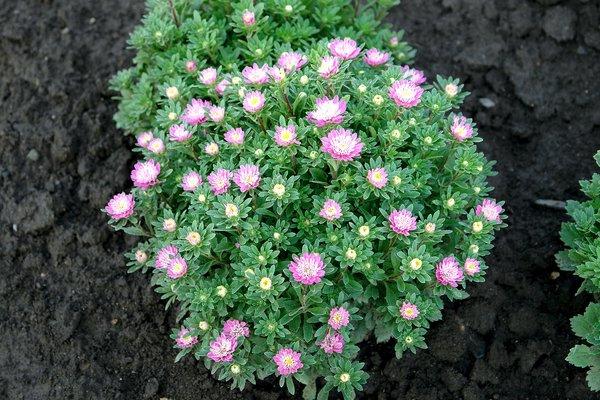
Care
Due to its unpretentiousness, caring for perennial Arabis is uncomplicated and does not require the unique skills of a gardener.
Watering
This flower is highly resistant to drought, so it feels better with a lack of moisture than with an excess of it. Perennial Arabis should be watered sparingly and only during prolonged dry periods, using a garden watering can. Excessive irrigation should not be allowed, as it will provoke rotting of the root system. Drainage of stones, gravel and pebbles should be done to protect against heavy rainfall.
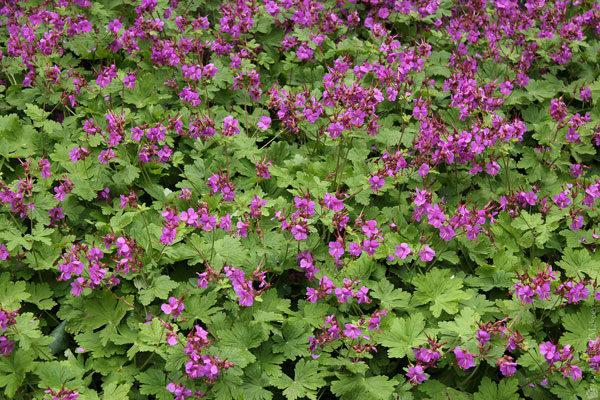
Loosening and weeding
It is required to loosen the land after each irrigation. While the plant is young, it needs frequent weeding and removal of weeds. After some time, Arabis will gain enough strength to suppress weeds on its own.
Top dressing
Arabis should be fed with organic fertilizers in the spring, before the buds form. Mineral complex fertilizers must be applied at the root before the flowering of the plant.
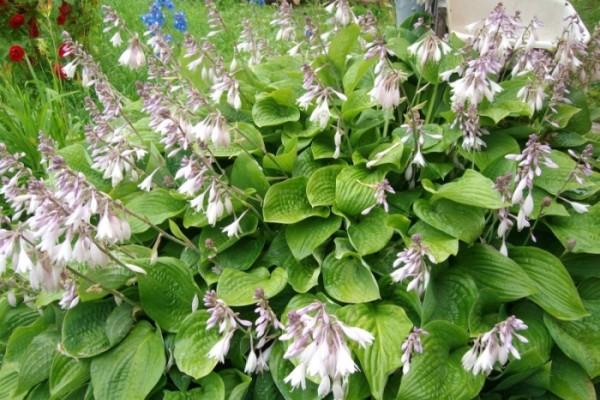
Pruning
Due to the rapid growth of stems, Arabis planted in carpet beds and mosaic garden compositions requires systematic pruning and shaping in order to maintain aesthetic appeal.Cuttings can be further used for plant propagation.
Transfer
The roots of Arabis are very thin and fragile, so it must be transplanted very carefully in order to prevent damage:
- Make several 25 cm deep landing holes.
- Moderately moisten the soil under the bush.
- Gently loosen the soil around the plant and remove it together with the earthy clod.
- Transfer the bush to the prepared hole, cover with earth, slightly compact and water.

Arabis in a new place easily takes root and begins to grow.
Diseases and pests
Arabis is resistant to pests and various diseases, but in rare cases it can be affected by viral mosaics. The main symptom of this disease is the appearance of small brown spots on the surface of the leaves, which subsequently increase in size until they completely merge with each other. Unfortunately, the affected plant does not respond to treatment. It must be dug out of the soil and destroyed. After that, treat the area with a concentrated solution of potassium manganese. No horticultural crops can be grown on it for at least a year.
Among the insect pests that pose a threat to Arabis:
- cruciferous flea;
- snails and slugs;
- caterpillars of cabbage scoop.
Wood ash for dusting is ineffective in this case. Treatment of plantings with special preparations is required - for example, "Biotlin", "Aktara" or "Karbofos".
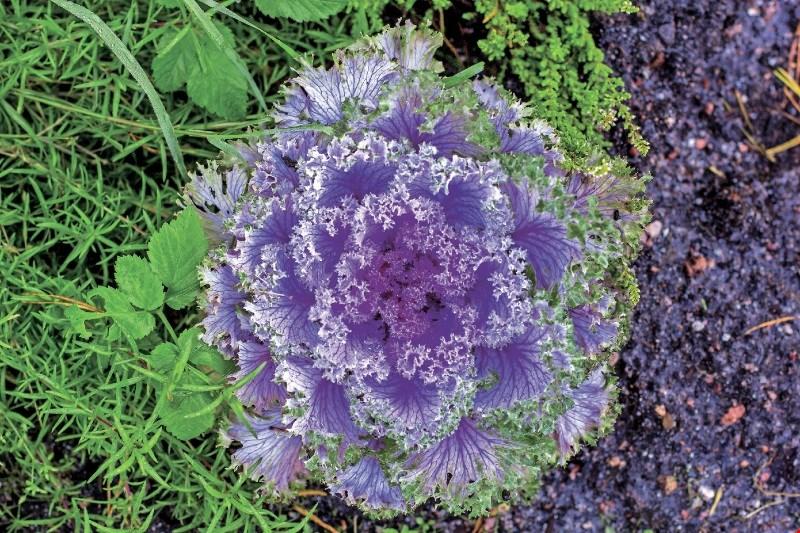
Reproduction
There are several breeding methods for perennial Arabis. For these purposes, you can use seeds, cuttings and some other options.
Seeds
Perennial Arabis seeds are prepared in April. Planting boxes must be filled with a substrate made from garden soil and sand in a 3: 1 ratio. Seeds should be sown to a depth of 0.5 cm. The optimum air temperature in the room is +20 ° С. After sowing the seeds, cover the box with glass. The soil must be moistened and ventilated for at least half an hour every day.
After the development of 2-3 leaves, the seedlings need to be transplanted into separate pots and grown before planting in open soil.
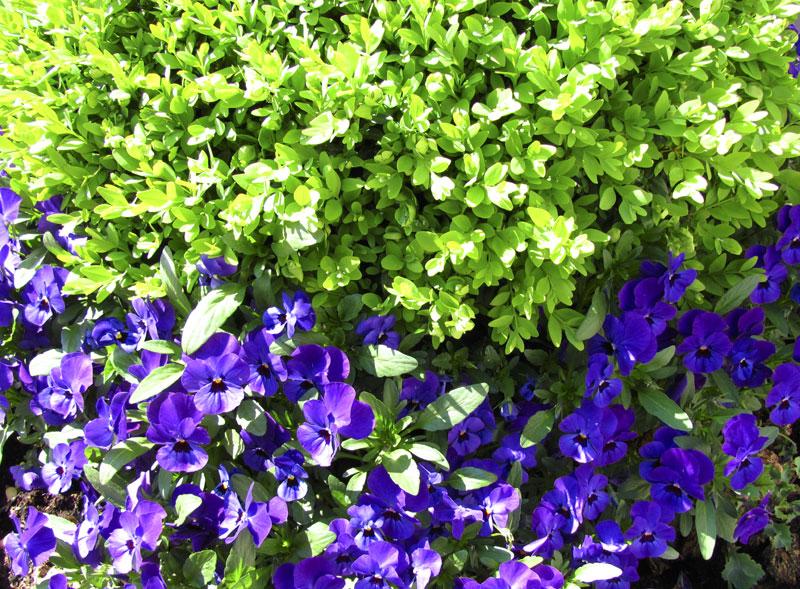
You can also sow seeds directly in your garden. For this, the soil must be well warmed up. The bed should be covered with spunbond before the first shoots appear.
Layers
To get a cut, you need to bend the Arabis shoot to the ground. In the area of the leaf node, fix it in the soil, and pinch the top.
As soon as the leaf node takes root young, you can separate the layers and transplant to the desired location.
Cuttings
You can propagate Arabis by cuttings from late April to mid-August. For harvesting shoots, absolutely healthy mother plants of at least three years of age are used.
You need to do the following:
- Cut off the top of the stem 6-8 cm long.
- Leave 1-2 leaves on top, and remove all the lower ones.
- Treat the cuttings with a substance that stimulates root growth.
- Plant in fertilized soil, keeping the distance between seedlings 40 cm, and between rows 20 cm.
- Create greenhouse conditions by covering the seedlings with plastic containers or foil. In this case, it is necessary to air the plantings every day and remove condensation from the covering material.
In order for the cuttings to take root faster, they need to be sprayed with water daily. In the summer heat, it is necessary to shade the beds, protecting them from intense sunlight. The root system of the plants will develop in about three weeks, after which they can be transplanted to a permanent place.
Dividing the bush
Plants that are more than four years old can be propagated by dividing the bush into several parts.

For this you need:
- After waiting for the end of flowering, water the bush abundantly and loosen the ground around it with a sharpened wooden peg.
- Remove the plant, shake off the rest of the soil and carefully divide into several parts - by hand or with a garden knife.
- Cut places of cuts with crushed coal.
- Immerse each part in a separate hole, sprinkle a little with soil on top and water.
After flowering
At the end of the flowering period of perennial Arabis, you need to correctly collect the seeds, and then prepare the plant for wintering.

Collection and storage of seeds
Even during the flowering of arabis, you should look after the most beautiful, strong and healthy inflorescences. They are suitable for the subsequent collection of seeds. This should be done after the onset of the first frost on a dry and sunny day. It is not recommended to harvest in rainy weather, as this will negatively affect the germination of seeds.
The inflorescences should be cut along with part of the shoot.
In a well-ventilated area, they should be allowed to dry naturally while hanging. After that, you need to remove the seeds, place in a small cardboard box and store in a dark place, protected from moisture penetration.
Preparing for winter
Being a cold-resistant plant, arabis can withstand temperatures of -5-7 ° C without special shelter. However, with a more significant decrease in temperature, it will need reliable protection.

When a severe frost sets in, the stems should be cut so that approximately 20-40 mm pieces remain on the surface. After that, a shelter should be made for this area - it can be made of spruce branches, a special covering material or a layer of dry leaves.
Kinds
Among the many species for cultivation, the following are used.
Alpine
Alpine Arabis is one of the most popular species that grows in the highlands of Western Europe and North America, the Polar Urals, the Far East, and the northern part of Scandinavia.
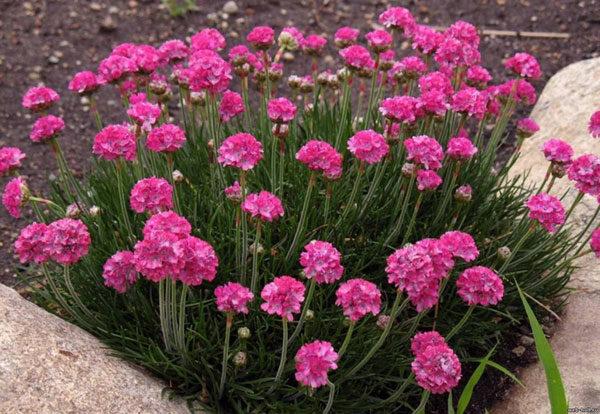
The flowers are white or pale pink in color, appear in April. They are collected in small racemose inflorescences. The leaves have different shapes - oval at the roots and heart-arrow-shaped on the stems.
Bruiform
Bruovid Arabis is common in the alpine and subalpine belt of the mountainous regions of Bulgaria, Greece and Albania. The cushion-shaped bush reaches ten centimeters in height. Loose inflorescences contain only 3-6 white flowers. The small ciliate leaves of the plant are oval and slightly tomentose on the surface.
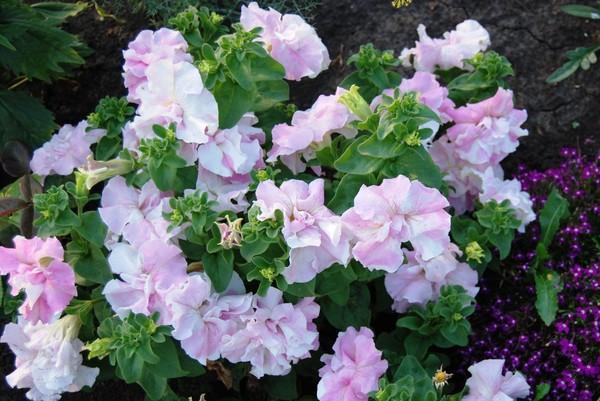
Caucasian
This subspecies is widespread in the Caucasus, Crimea, the Mediterranean, as well as Asia Minor and Central. The flowering period begins in June and lasts for four weeks, but individual flowers can appear on the bush until autumn. White large flowers are collected in racemose inflorescences. Small leaves are green with dense white hairs. They have an oblong shape with large teeth along the edge.
Escaping
The escaping Arabis lives in natural conditions in the Balkans. Often, this plant up to 12 centimeters high serves to anchor sliding slopes. The flowers are white or purple. Despite the unpretentiousness and resistance to frost, this species requires a reliable shelter for the wintering period.
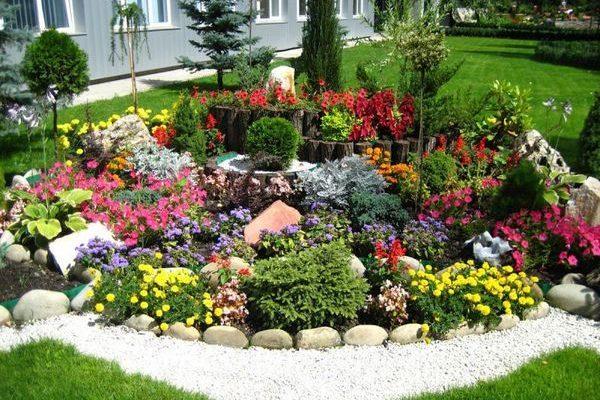
Undersized
The height of a bush belonging to this variety is no more than 15 centimeters. It is most widespread in the Alps and Apennines. White flowers appear in late May or early June.
Prolomnikovy
Broaching Arabis is found in Turkey, mainly on stone slopes at an altitude of about 2300 meters above sea level. The plant reaches 5-10 centimeters in height.Its small, pointed oval leaves form neat rosettes. White flowers are collected in loose corymbose inflorescences.

Ciliated
This species of perennial plant lives in the California mountains at 500 meters above sea level. Characteristic features are ciliate dark green leaves combined with lilac or pink flowers. The width of the bush reaches 25 centimeters, and the height, as a rule, is no more than 8 cm. This is a capricious species that cannot tolerate frost, but loves hot weather.
Ferdinand of Coburg Variegat
This plant, widespread in Bulgaria, attracts attention with its unusual color of leaves - with a light green center and a spectacular edging of white, light pink or yellow.
The lush flowers have a classic white color. The diameter of the bush is about 30 cm, and its height is no more than 5 cm. Such arabis is able to withstand subzero temperatures, but only if there is high-quality drainage.
Variegated
Variegated Arabis is another name for the previous species.
Popular varieties
Among the variety of varieties, each gardener will be able to choose a suitable option for himself.
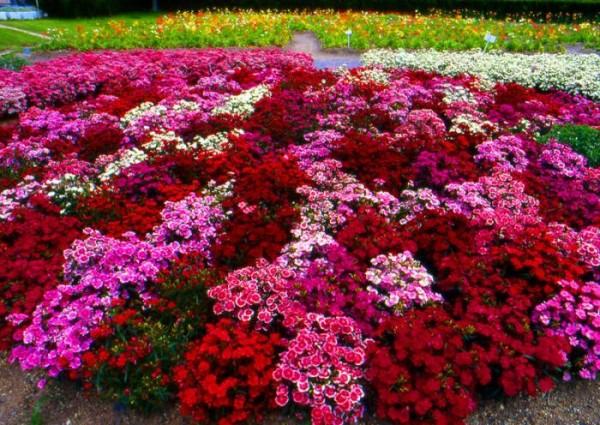
Schneeshaube
Schneeshaube is a popular variety of Alpine Arabis, characterized by large (up to 20 millimeters in diameter) size of snow-white flowers. They are collected in racemose inflorescences up to 15 centimeters long. The average height of one bush is 25 centimeters.
Terry
Terry rezuha looks like a levkoy. She has pronounced large inflorescences in relation to the total size of the plant.

Pink
The pink creeper has creeping stems and reaches a height of 20-30 centimeters. Large flowers of a delicate pink shade are formed in inflorescences up to 12 centimeters in length. This variety is an adornment for the alpine city and borders.
Flore-Peno
This mountain variety is distinguished by lush white double flowers on long strong peduncles.
Variegata
Variegata is a type of Caucasian Arabis. Its distinctive feature is the gray-green dense foliage with a white rim, which looks very impressive throughout the season. In May, white flowers appear in the form of a lush cap.
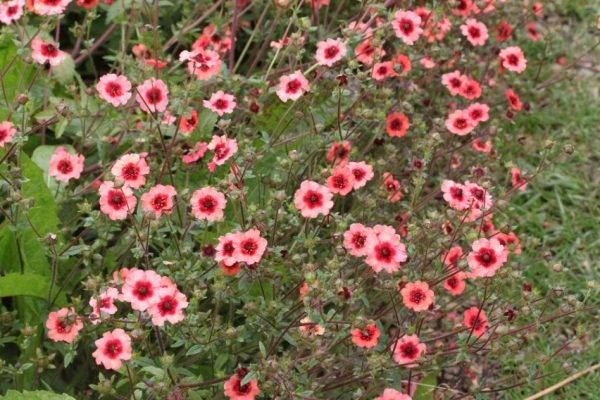
It is an unpretentious plant that can grow in poor and stony soils.
Rosabella
This species is distinguished by a rich pink color of lush inflorescences.
Route Sensation
It is characterized by an elongated shape of leaf plates, as well as a rich pink hue of flowers.
Frühlingshaber
Representatives of this variety have rich pink flowers and small neat leaves.
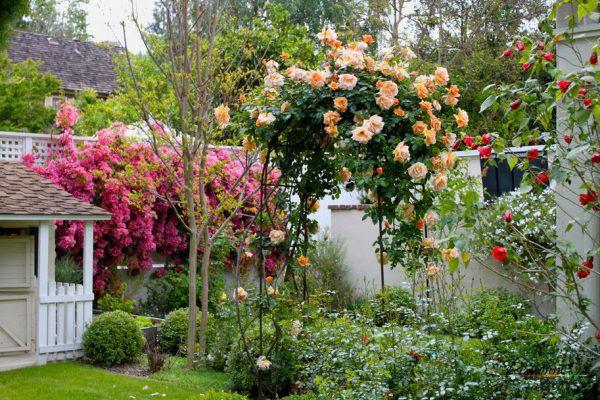
Zyunderman
Arabis Zyundermana belongs to dwarf varieties with a height of no more than 5 centimeters. It has small, dense leathery leaves with an attractive sheen, as well as white flowers. Grows in sunny areas with fertile soil.
Grandiflora
Grandiflora forms low curtains up to 20 centimeters. The flowers of this variety are pink in color and small in size, they are formed into classic racemose inflorescences.
Rezuha
Rezukha is the Russian name for Arabis. It is believed that it happened due to the property of the leaves of the plant to scratch the skin of the hands with small, hard hairs.

Partners
It is recommended to use as partners for Arabis on the garden plot:
- tulips (mostly scarlet);
- alissum;
- rape;
- irises;
- daffodils.
Use in landscape design
In landscape design, Arabis is used in alpine slides, flat rockeries, curbs and mixborders. The most effective in this regard are varieties with white flowers and variegated expressive leaves. This plant can be used to fill cavities between stones in retaining walls, as well as to be planted along garden paths.
